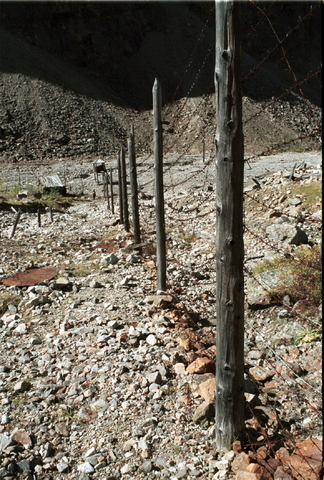 After a brief sequence in present-day San Francisco, the early chapters of Altar of Bones go back in time to Norilsk in frozen 1937 Siberia and to the desolate world of the Gulag. The term Gulag referred to an archipelago-like network of 476 prison camps that stretched throughout Russia with many of the camps in Siberia and in the Soviet far east.. Gulag is an acronym for Glavnoye upravlyeniye ispravityel’no-trudovih lagyeryey i koloniy (Chief Administration of Corrective Labor Camps and Colonies).
After a brief sequence in present-day San Francisco, the early chapters of Altar of Bones go back in time to Norilsk in frozen 1937 Siberia and to the desolate world of the Gulag. The term Gulag referred to an archipelago-like network of 476 prison camps that stretched throughout Russia with many of the camps in Siberia and in the Soviet far east.. Gulag is an acronym for Glavnoye upravlyeniye ispravityel’no-trudovih lagyeryey i koloniy (Chief Administration of Corrective Labor Camps and Colonies).
About 28,000 people were serving sentences for hard labor at the time of the Russian Revolution. After the revolution, the Bolshevik government set up prison camps for common criminals, prisoners of the civil war, officials accused of corruption, sabotage, or embezzlement, political enemies, dissidents, former aristocrats, and large landowners. By 1928 about 30,000 prisoners were in these camps. An appendix to the minutes of a Politburo meeting on June 27, 1929, (repeated in a secret decree of Sovnarkom on July 11) laid the legal groundwork for “corrective labor camps.” On April 25, 1930, the Gulag was officially established (first called the Ulag and renamed Gulag in November).
The number of prisoners held in the camps increased dramatically through the Stalin era. In 1931–32 approximately 200,000 prisoners were in the Gulag; by 1935 the number had grown to approximately 800,000 in the camps and an additional 300,000 in the colonies (prisoners were sometimes released early for good behavior; they were not allowed to return home but became “free settlers” outside the camp; in addition, sometimes those who had served out their sentence were denied the choice of where to live and given land near the camp); by 1939 there were approximately 1.3 million in the camps and 350,000 in the colonies. Those culled from communist party cadres in Stalin’s purges joined common criminals and millions of male intellectuals, professionals, and ordinary individuals arrested for “crimes” as minor as a joke or as vague as a charge of anti-Soviet agitation. In 1946 Soviet prisoners of war survived Nazi camps only to be sent to the Gulag on their return home for “crimes of desertion” or “collaboration.” So many innocent people were sent to the Gulag that it was a common joke that prisoners would say “I got a 25 year sentence, and I haven’t done anything.” To which guards would reply, “That’s nonsense—for nothing you only get 10 years.”
Women made up seven to 26 % of the prisoners in the camps (the higher percentage was during the war when men were released to fight). There were also camps for children and “mother zones” where children up to three-years-old were kept beside their mothers. Even though they were kept in close proximity, the mothers were only allowed to see their children once a month and were denied these visits for not keeping up with work quotas.
An estimated 1.6 million died in the Gulag from 1929 – 1953. This doesn’t include those who survived their sentence but died shortly after release due to the privations they had suffered in the camps.
Stalin died in March 1953. An amnesty that same month freed non-political prisoners and prisoners with sentences of less than five years. In 1954 political prisoners began to be released. Their release accelerated after Krushchev denounced Stalinism in February 1956 at the 20th Congress of the Communist Party of the Soviet Union. By the late 1950s, almost all the camps were gone, though colonies continued to exist. MVD (Ministry of Internal Affairs) order No 020 in January 1960 officially liquidated the Gulag.
Further reading:
Gulalg: A History by Anne Applebaum
Check back next week for details about life in the Gulag at the time the sequence in Altar of Bones takes place.




loved reading The Altar of Bones , the publisher left an excerpt at the very end of the book
almost two years have passed and no subsequent finished second novel under Phillip Carter
Great to hear you loved Altar, Nick. The second book is done and should be out next year. My editor left for another job right as I was turning it in and the change over to my new editor slowed things down. I hope you find the book worth the wait! You can follow my Facebook page for frequent updates.